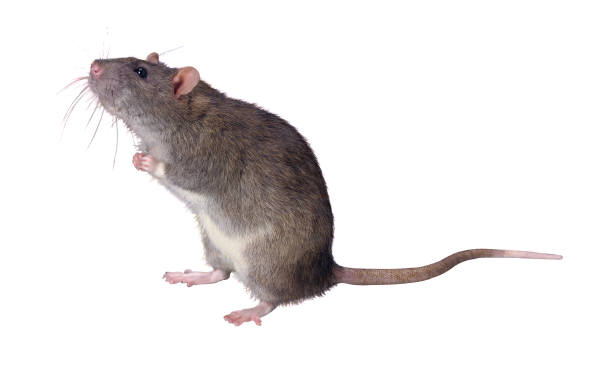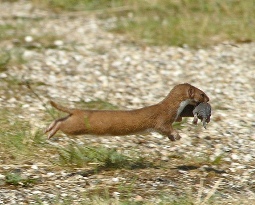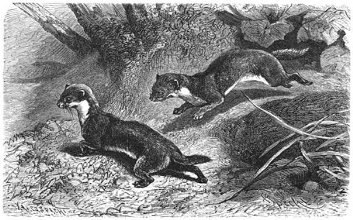 What's
for Supper?
What's
for Supper?
Least weasels are definitely true carnivores. They feed primarily on fresh prey items. Their prey include, but are not limited to, rodents and insects. The majority of their diet is strictly burrowing mice and voles. Due to the weasels tubular body structure they are able to reach the mice and other rodents by attacking them in their burrows.

The capturing tactic involves
speed and consistency. The weasel
first picks out it's prey and plan is set in place. Then the
weasel gets close enough to pounce on top of the prey. To secure
it's grasp the weasel bites the back of the organisms head,
using their canine teeth. The weasel then carries the prey
away to either be devoured or stored for a later meal.
Mustela nivalis has a straight through digestive system that
works rather quickly in comparison to herbivore systems.
Mustela nivalis has the ability to sense sound and odor efficiently is a key to their success as predators. This allows them to sense their prey from a distance and also allows a smooth capture.
This may seem crude to you but there is a positive side to this predator prey interaction. Although weasels kill rodents frequently, they usually do not kill off the total population of that specific species. When the population of prey dwindles, instead of killing the last survivors, the weasels relocate to a more populated area. This is beneficial for other animal interactions in the area and also the wildlife in general.
To learn more about these "Hunters of Mice" go to the Wisconsin Natural Resources Magazine

